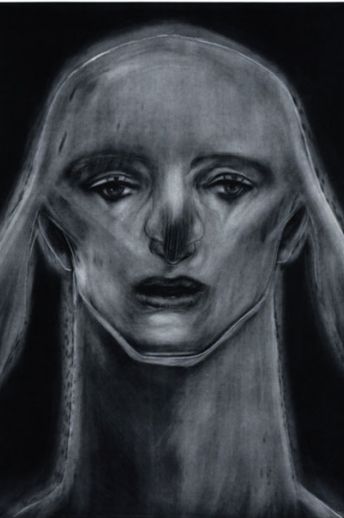Ten Questions with Katsura Funakoshi
The May-June issue of Tokyo Art Map features a 10-question interview with Katsura Funakoshi, a sculptor whose works on paper are on display right now at Shibuya’s Hikarie 8/ Art Gallery. His sculptures are known for being dark and transgressive figures of humans and humanoids, and his mezzotints follow this same theme.

Q1. What are some surprisingly essential items for creative work?
A mirror and elastic bands for attaching luggage to a bicycle.
Q2. How do you like to spend your free time?
I don’t have a particular favorite place to spend my leisure time, but I like wandering the streets of foreign countries and finding good cafes.
Q3. What sort of place is Tokyo for you?
It’s a place I don’t understand. There are many people whom I cannot understand.
Q4. Where is your favorite spot in Tokyo?
Portmans Cafe (in Kiyosumi-shirakawa).
Q5. What was one project that was particularly memorable from your illustrious career?
A sculpture of the Madonna for a Trappist monastery (it led to the use of camphor wood in my early work).
Q6. What’s a book that’s changed your life?
Pär Fabian Lagerkvist’s Barabbas. It’s the story of a thief who was pardoned instead of Christ. It won the Nobel Prize for Literature.
Q7. Describe an encounter that changed your life.
A girl in the same year as me in high school (she is now my wife).
Q8. What’s your favorite phrase?
“Hope is the last thing to die.” It’s the words of gymnast Věra Čáslavská upon being appointed as a government minister.
Q9. Which historical sculptors do you revere?
Yasutake Funakoshi, Brancusi, and Unkei.
Q10. If you could define your position in the world in one phrase, what would it be?
In art history, I’d be the brakes; the flavoring of the soup; one of the stones in the garden.
Paul Baron
Paul Baron



